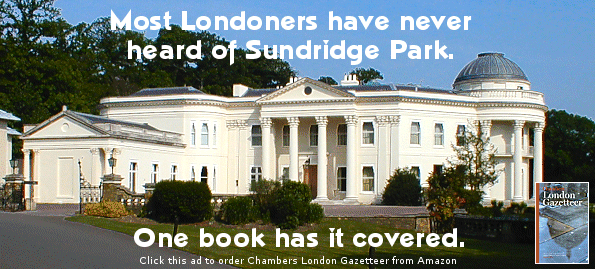|
|
 |
|
Bromley
|
 |
|
|
|
Postcode area: Bromley, BR1
Station: South Eastern (Zone 4)
Further reading: Ken Wilson, Sundridge Park, Sundridge Park Management Centre, c1991

Text and selected images are reproduced with the permission
of Chambers but may differ from the published versions
All content © 2005–2010
|
|
|
 |

